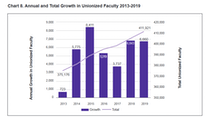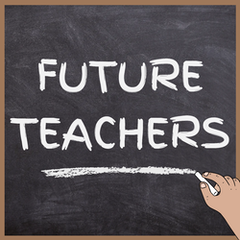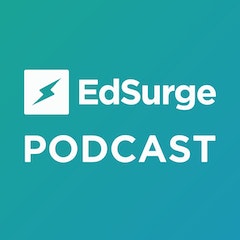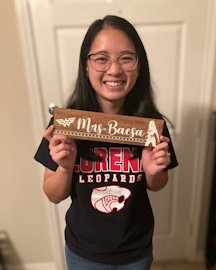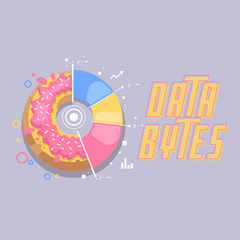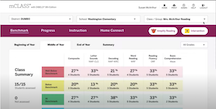
This fall, after a restless night overthinking an assignment for my upcoming class and drinking three cups of not-strong-enough coffee, I added the final touch on my latest assignment for students in my World History II class.
I was finally satisfied with the plan I had for my 10th graders, when it hit me: none of this actually matters.
To be clear, this assignment would require students to analyze documents and write their own responses using evidence, which are important skills of course, but it would inevitably lead to me manically red inking papers that ultimately were written because I assigned an essay that would only ever be read by me.
Unfortunately, my students’ work — and the inkblots which carried my feedback — would never get into the hands of readers who could make change. So, the hours students spent writing and the time I spent grading would have no impact outside the four walls of my classroom.
It was a maddening moment of clarity for me. Sure, the skills of writing may have been practiced, but so what? To what end? As a high school social studies teacher, my job includes helping students learn to use evidence to present arguments, engage in civil discourse and take informed action to bring about change. A core part of that is preparing students to write out in the real world.
But there are forces that get in the way. Curricular mandates and pressure from school and district leaders, for example, can create a teaching and learning environment that fosters insular, make-work assignments. When I considered some of my latest assignments, I realized that’s what I was doing — these writing tasks embodied work without deep value or authentic audiences. As a result, my students were only completing them for a grade, and had lost sight of why they’re learning any of this at all. I couldn’t blame them.
I had a related revelation a few years ago, when I began to recognize that curriculum without a why is problematic. Since then, I’ve redesigned my curriculum, honing in on an overarching essential question for each unit that allows me to explore modern, relevant issues with students. I like to think of this shift as a transition from content-based to issues-based curriculum.
As I reflected on the evolution of my curriculum and why I was teaching what I was teaching, I questioned how I’d landed on the tasks I’d been assigning students.
While looking for research and ideas for how to make a change, a close friend of mine recommended a talk by Larry McEnerney, who served as director of the writing program at the University of Chicago for 30 years, about the craft of effective writing. While McEnerney was speaking to graduate students, some of his points resonated deeply for my work with high schoolers, particularly as he pointed out a hard truth about writing in the educational system: “Teachers read texts because they are paid to care about the students. You’ve learned to write in a system where you’re writing to readers who are paid to care about you. That will stop,” McEnerney said.
This served as a reminder that make-work assignments can hinder students’ writing abilities because students write only with the teacher and assignment in mind, as opposed to a genuine audience of readers interested in deepening their understanding or making a change.
With McEnerney’s points in the back of my mind, I began wondering how I could provide students with opportunities to write in a variety of contexts that served authentic audiences.
I wanted to build upon the curricular updates I’ve made to develop more meaningful assignments in which students could write for an audience of readers positioned to make change. If I could offer students more opportunities to interact with these issues, I thought, I could help them tap into the why of their learning.
Giving My Students Something to Talk About
For students to say something interesting, meaningful and authentic, they need something interesting, meaningful and authentic to talk about.
This isn’t a novel idea. There are a number of teaching methods developed with this idea in mind, such as project-based learning, which centers on students building skills through working on an engaging project with purpose, and inquiry-based learning, which allows students to develop their own questions and curiosities about content. And this concept was a driving force as I redesigned my own curriculum, anchoring it to real, timely, pressing issues that impact my students.
To develop writing assignments that would promote student agency and empowerment, I knew I needed to consider their audience. Who would read their work?
At first, I started small, taking one unit from my American History class — “The Early Republic,” — and reflecting on why students truly needed to learn the content, how it’s relevant today and what kinds of assignments would provide opportunities for students to write for an audience that would motivate them.
This unit covered the Constitutional Convention, the factions that formed in early American history, and the establishment of the American government system. When I reoriented this unit around an engaging issue, I created an important essential question that would address problems that I knew would resonate with my students: Who are “We, the People?” in the preamble of the U.S. Constitution?
By shifting the focus of the unit from historical content to this essential question, I was able to help students explore a number of modern issues, including representation, government structures and voter suppression. Students began to think more critically about who was being represented by the Constitution, and more importantly, who was not.
In prior years, this unit culminated with an essay in which students responded to the essential question. This year I decided to experiment with a new assignment where students had the option to write a letter to a legislator, a nonprofit organization, a lobbyist or a political action group to help advocate for potential policy changes to better represent “the people.”
This pivot changed everything for students. In addition to learning about the Constitutional Convention and early American history, they learned how to use their writing to advocate for issues they cared about. They worked collaboratively and brainstormed people and organizations to send their work to. They began seeking feedback on their work before they sent it because there were stakes beyond grades. It even sparked a meta-discussion around whether they, the students, were a part of “We, the People,” and if their voices could inspire change.
After experiencing success reworking this assignment, I tried it with a unit from my World History class called “Atlantic Revolutions,” which included the American, French, Haitian and Mexican revolutions.
I had already reframed the unit from focusing solely on historical content to applying historical understanding to modern challenges, particularly the essential question, “Is the United States heading towards political violence?” Students evaluated the usefulness of a number of academic theories, including Louis Gottschalk’s Theory of Revolution and Symbolic Politics Theory, decided which theory was most comprehensive and then applied it to the modern-day U.S.
Rather than culminating the unit by having students write yet another essay for me, I offered them an opportunity to write to a political theorist, an academic, a law enforcement officer, legislator or news pundit, regarding the current threat of political violence through utilizing one of the theories they studied.
They began asking questions like, “Who should I write to?” and “Who has the power to actually change things?” and “How do I find the contact information of those in positions of power?” By developing more authentic writing opportunities, the historical content in our units became alive and useful for my students.
Beyond the Curriculum
My greatest fear as a teacher is a student raising their hand in class and genuinely asking, “Why do we need to know this?”— and me stumbling to land on a clear, important answer. This nightmare keeps me up at night (hence the need for those three cups of coffee).
Grounding my units in important modern issues has allowed my students to see the value in what they are learning, and designing assignments that empower them to make a difference has made the purpose more evident. It’s been exciting to witness my students engaging with the content more meaningfully through interactions with the world outside of the classroom.
This idea has been critical for me as a social studies teacher, but it goes beyond the social studies classroom. To engage our students in deep learning across disciplines, any teacher can reflect on their content and ask themselves questions like, “Why am I teaching this?” and “Is this the most meaningful assignment I can offer?” If they’re not satisfied with the answer, centering a core issue that students can apply their learning toward might help.
I got into this profession to make a difference. What really matters isn’t if my students can regurgitate information on a quiz or write a formulaic five paragraph essay. What matters most to me is that they see the value in what they are learning, develop agency in how they engage with it and believe that their voice matters in this world.
- SEO Powered Content & PR Distribution. Get Amplified Today.
- PlatoData.Network Vertical Generative Ai. Empower Yourself. Access Here.
- PlatoAiStream. Web3 Intelligence. Knowledge Amplified. Access Here.
- PlatoESG. Carbon, CleanTech, Energy, Environment, Solar, Waste Management. Access Here.
- PlatoHealth. Biotech and Clinical Trials Intelligence. Access Here.
- Source: https://www.edsurge.com/news/2024-03-15-to-make-assignments-more-meaningful-i-m-giving-students-a-more-authentic-audience
- :has
- :is
- :not
- :where
- $UP
- 10th
- 30
- a
- abilities
- Able
- About
- academic
- across
- Action
- actually
- added
- addition
- address
- advocate
- After
- agency
- ago
- alive
- All
- allowed
- allows
- already
- am
- American
- an
- analyze
- and
- Another
- answer
- any
- applied
- Apply
- Applying
- ARE
- arguments
- around
- AS
- ask
- asking
- assigned
- assignment
- assignments
- At
- audience
- audiences
- Authentic
- back
- BE
- became
- because
- been
- before
- began
- being
- believe
- Better
- Beyond
- bring
- build
- Building
- but
- by
- called
- CAN
- care
- cared
- carried
- centering
- Centers
- challenges
- change
- changed
- Changes
- chicago
- civil
- clarity
- class
- classroom
- clear
- Close
- Coffee
- completing
- comprehensive
- concept
- Consider
- considered
- Constitution
- contact
- content
- contexts
- Convention
- Core
- could
- course
- covered
- craft
- create
- created
- critical
- culminating
- Current
- Curriculum
- decided
- deep
- deep learning
- deeply
- designing
- develop
- developed
- developing
- difference
- Director
- disciplines
- discourse
- district
- do
- documents
- doing
- driving
- each
- Early
- educational
- Effective
- empower
- empowerment
- end
- enforcement
- engage
- engaging
- Environment
- ESSAY
- essential
- establishment
- evaluated
- Even
- EVER
- everything
- evidence
- evident
- evolution
- example
- exciting
- experiencing
- experiment
- explore
- factions
- Fall
- fear
- feedback
- few
- final
- Finally
- Find
- First
- five
- Focus
- focusing
- For
- Force
- Forces
- formed
- fosters
- four
- French
- friend
- from
- genuine
- genuinely
- get
- Giving
- Goes
- got
- Government
- grade
- graduate
- greatest
- Group
- had
- hand
- Hands
- Hard
- Have
- having
- he
- Heading
- help
- helping
- hence
- High
- hinder
- his
- historical
- history
- Hit
- HOURS
- How
- How To
- HTTPS
- i
- idea
- ideas
- if
- ii
- Impact
- important
- importantly
- in
- included
- Including
- inevitably
- information
- informed
- inspire
- interact
- interactions
- interested
- interesting
- into
- issue
- issues
- IT
- Job
- jpg
- kinds
- knew
- Know
- Land
- latest
- Law
- law enforcement
- lead
- leaders
- LEARN
- learned
- learning
- letter
- like
- looking
- lost
- made
- make
- Making
- mandates
- Matters
- May..
- me
- meaningful
- methods
- might
- mind
- mine
- Modern
- moment
- more
- most
- motivate
- my
- Need
- needed
- never
- New
- news
- night
- no
- None
- Nonprofit
- novel
- number
- of
- offer
- offered
- Officer
- on
- ONE
- only
- opportunities
- Opportunity
- opposed
- Option
- or
- organization
- organizations
- our
- out
- outside
- overarching
- own
- paid
- papers
- part
- particularly
- People
- Pivot
- plan
- plato
- Plato Data Intelligence
- PlatoData
- points
- policy
- political
- politics
- positioned
- positions
- potential
- power
- preparing
- present
- pressing
- pressure
- Prior
- problems
- profession
- Program
- project
- promote
- provide
- purpose
- question
- Questioned
- Questions
- Quiz
- raising
- Read
- readers
- real
- realized
- really
- recognize
- recommended
- Red
- reflect
- reflected
- reflecting
- regarding
- related
- relevant
- reminder
- represent
- representation
- represented
- Republic
- require
- research
- Resonate
- resonated
- responses
- result
- revelation
- s
- Said
- satisfied
- satisfied with
- say
- School
- see
- seeking
- send
- sent
- served
- shift
- SHIFTING
- should
- Sight
- since
- skills
- small
- So
- Social
- solely
- some
- something
- sparked
- speaking
- spent
- stakes
- started
- States
- Stop
- structures
- Student
- Students
- studied
- studies
- stumbling
- success
- such
- suppression
- sure
- system
- Take
- taking
- Talk
- Tap
- tasks
- teacher
- Teaching
- than
- that
- The
- the world
- their
- Them
- themselves
- then
- theory
- There.
- These
- they
- things
- Think
- this
- this year
- those
- thought
- threat
- three
- Through
- time
- timely
- to
- today
- touch
- toward
- towards
- transition
- tried
- truly
- truth
- u.s.
- Ultimately
- understanding
- unit
- United
- United States
- units
- university
- University of Chicago
- upcoming
- Updates
- upon
- use
- useful
- using
- Utilizing
- value
- variety
- violence
- Voice
- VOICES
- Voter
- wanted
- was
- Way..
- we
- were
- What
- when
- whether
- which
- while
- WHO
- why
- will
- with
- without
- witness
- wondering
- Work
- worked
- working
- world
- would
- write
- writing
- written
- year
- years
- yet
- you
- youtube
- zephyrnet



